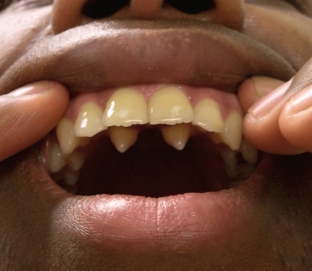Usually, looking at a person, what do we notice first of all? Eyes, smile… So, if he has beautiful healthy teeth – it certainly makes a favorable impression. Purpose of teeth – not only in the performance of an aesthetic function. They are involved in the initial mechanical processing of food. The formation of speech sounds is also not complete without the participation of teeth. However, apart from the fact that they need to be cleaned, we know little about these bony formations. Еstet-portal.com presents amazing facts about human teeth.
The unknown about the known: what else we don't know about human teeth
- Some babies are born with teeth already erupted. But this is a rather rare occurrence in a ratio of 1:200. These are usually lower gum teeth and have weak roots. Sometimes this phenomenon is associated with the presence of certain medical problems in the child.
- Human teeth are very strong, which is largely due to the high content of calcium in them (dental calcium makes up almost 99 percent of the amount of this element that is contained in the body as a whole). At the same time, the main problem of human teeth is the inability to restore their own tissues. Therefore, a destroyed tooth can either be "repaired" or prosthetized.
- There are no 2 identical dentitions. In fact, they are as unique as fingerprints.
- It was the ancient Greek healer Hippocrates who called children's teeth milk teeth. He believed that the growth of these teeth is directly dependent on the mother's breast milk, which feed on babies. In fairness, we note that the "father of medicine" was not far from the truth, because milk contains a considerable amount of calcium, and, as you know, without this element, the growth of teeth (it does not matter: permanent or milk) is not possible.
- It turns out that not all people go through such a natural stage in our life as changing milk teeth to permanent ones. It is considered the norm when permanent teeth are cut in a child at 5 & ndash; 6 years old. And this process comes to an end at 11 & ndash; 12 years. However, there are people (and often such cases are related to family predisposition) who remain with milk teeth.
- In the practice of dentists, there are also cases of hyperdontia (this feature is typical for about 2 percent of people). In the presence of such, in fact, anomalies, teeth grow in excess of the set, additional ones. It happens that some of these teeth "hide" under the gum, but most often they still erupt and crowd the rest.
There are few known cases of people losing their permanent teeth as an adult and growing another set of them.
But usually when teeth fall out, prosthetics are performed.

- The first organs to be transplanted were teeth. The beginning of such procedures was laid back in ancient Egypt. Doctors removed teeth from slaves or those who died in battles, and rearranged them for wealthy people. However, the pharaohs were given a special honor – artificial teeth, which were made of ivory.
In other nations, dentures could be made from tortoise shells, which are known to be durable. Such work required considerable skill, and therefore only very wealthy people had the opportunity to acquire such prostheses. And for example, the ancient Incas practiced the manufacture of artificial teeth from amethyst and quartz. In any case, this is evidenced by the jaw of a representative of this Indian tribe, found in South America.
- Traditionally it is considered that straight teeth, characterized by whiteness, are ideal. But not in Japan. Crooked teeth are incredibly popular in this country. In order to achieve the desired effect and become the ideal of beauty, Japanese women deliberately distort teeth that are normal in our view, focusing on fangs. According to local ladies, in this form they look not only more beautiful, but also younger.

- Of course, cases of interchangeability of organs are known in medical practice, but the following case is simply unbelievable. 16 years ago, a woman in the United States, blinded by a rare disease, had her canine removed, then an artificial lens was inserted into it and "transplanted" into the left eye. Thus, the woman gained the ability to see.
Estet-portal.com hopes that from this material you have learned the most interesting facts about teeth.






Add a comment